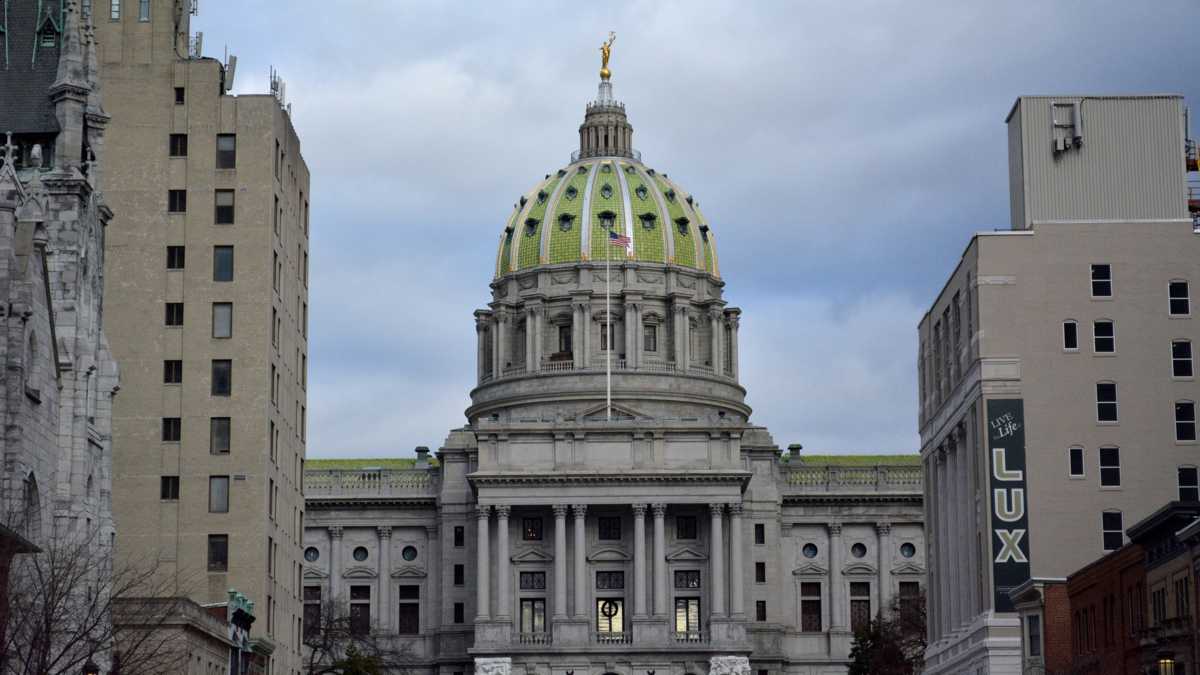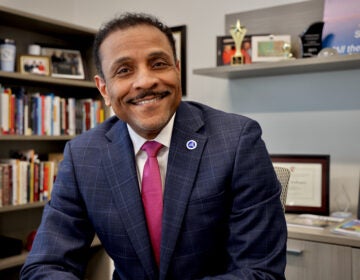Report calls for overhaul of Pa. charter law
Pa.'s 20-year-old charter law has been criticized by every side of the political aisle. A new report from Public Citizens for Children and Youth offers ideas for change.
Listen 1:47
Pa. Capitol Building, Harrisburg. (Kevin McCorry/WHYY)
Pennsylvania’s 20-year-old charter law has no shortage of critics, from just about every political corner.
Add to that list of critics Public Citizens for Children and Youth, an education advocacy group that has often butted heads with the charter sector. On Thursday, PCCY released a set of recommendations for amending the law.
The proposal — and an accompanying panel discussion Thursday morning — laid out some of the considerable common ground shared among charter backers and opponents.
The PCCY proposal called for a tiered charter renewal process that would expand excellent schools and close poorly performing charters quicker. It also recommended more consistency in the charter approval and review process so schools would know what to expect.
“Most charters are just doing as well as their district, and they just need a predictable environment for renewal,” said PCCY executive director Donna Cooper.
Charter backers, including state Rep. Jordan Harris, D-Philadelphia, agree with much of that framework.
“I support closing the low-performing schools that have a history of not doing right by our students,” said Harris.
It’s in the details where things get dicey.
PCCY wants to expedite expansion for charters that perform in the top 10 percent of “all schools within a district, where the charter is educating students who have a comparable demographic profile of the district.” Some believe that percentage threshold should be higher and include more schools.
And there are other sticking points.
Charter leaders believe state funding should cover their capital costs, not simply their operational costs. PCCY and others argue the formula for distributing special-education dollars unfairly benefits charters and harms traditional school districts.
Veronic Brooks-Uy from the National Association of Charter School Authorizers pushed Pennsylvania to change its charter authorizing process. In Pennsylvania, school districts have the power to approve or deny charter applications. Brooks-Uy and NACSA believe that power should belong to independent authorizers that aren’t keeping one eye on their own budgets while they ponder new charters.
Cooper disagreed, saying that balancing financial priorities is the responsibility of locally elected government.
“When you have a third-party entity that has no accountability to taxpayers, the tension of cost and expansion disappear,” she said. “And unfortunately, like it or not, that’s a reality in any kind of distribution of public funds.”
Cooper, more than most, knows the difficulty of bridging all these divides.
Last year, she participated in negotiations among officials from the School District of Philadelphia and local charter leaders. For months, the sides tried to hammer out a proposal for new charter legislation that they would then present to Harrisburg politicians. Despite some progress, the effort fell short, and charter leaders ended up backing House Bill 97, the current charter reform bill before the state Legislature.
‘A separate and unequal school system’
A lively conversation followed the release of PCCY’s report and included thoughts from several state lawmakers.
Much of it struck at the central tension in the charter debate: How can traditional districts and charters co-exist with limited dollars?
When students leave traditional public schools for charters, they take their per-pupil dollars with them and, research shows, leave their school districts with “stranded costs,” such as hollowed-out buildings. A recent report by the nonprofit Research for Action estimated that these costs start at more than $8,000 per student and decline over time.
Charter advocates say there should be more pressure on districts to downsize when families opt out.
“The stranded costs districts face are real,” said Brooks-Uy from NACSA. “But we shouldn’t punish families for choosing something different.”
But charter skeptics worry that the fragmentation of public dollars leads to broad inefficiencies that hurt the financial health of the system as whole.
“What we have done with charters is create a separate and unequal school system,” said state Rep. Jim Roebuck, D-Philadelphia.
Roebuck said public education had “gone back to 1954,” before the Supreme Court outlawed segregation.
Much of the debate, many agreed, comes down to money.
The state used to reimburse traditional school districts when a student departed for a charter. If that line item were restored, Harris said, it would be much easier to forge consensus.
“I think a lot of the arguments and squabbles you hear would go away,” he said.
State Rep. Jamie Santora, R-Delaware, said the disagreement between traditional public schools and charters obscured a much larger issue: underfunding.
The bulk of Pennsylvania’s charter seats are in Philadelphia and the surrounding counties. The state’s system for distributing education dollars historically disadvantaged this growing part of the state, Santora said, because it held funding levels constant in parts of Central and Western Pennsylvania that have bled population.
The state has started amending that disparity with a new funding formula, but it applies this revised methodology to relatively few state dollars. Santora argued that fixing the funding problem would alleviate the financial pressure on charters and traditional districts in Southeast Pennsylvania and clear up some of the simmering disputes.
“For the most part, it’s the Southeast versus the rest of the state,” Santora said.
To check out the rest of PCCY’s report on the state’s charter law, click here.
WHYY is your source for fact-based, in-depth journalism and information. As a nonprofit organization, we rely on financial support from readers like you. Please give today.






